Durango — Hundreds of residents were evacuated from the small community of Hermosa, about 10 miles north of Durango, Colo. on Highway 550 as the 416 forest fire exploded down a hillside northwest of the community today.
High temperatures in the 80s, low humidity and gusty winds caused the fire to explode into the treetops along County Road 201 on the hillside above Hermosa Creek.
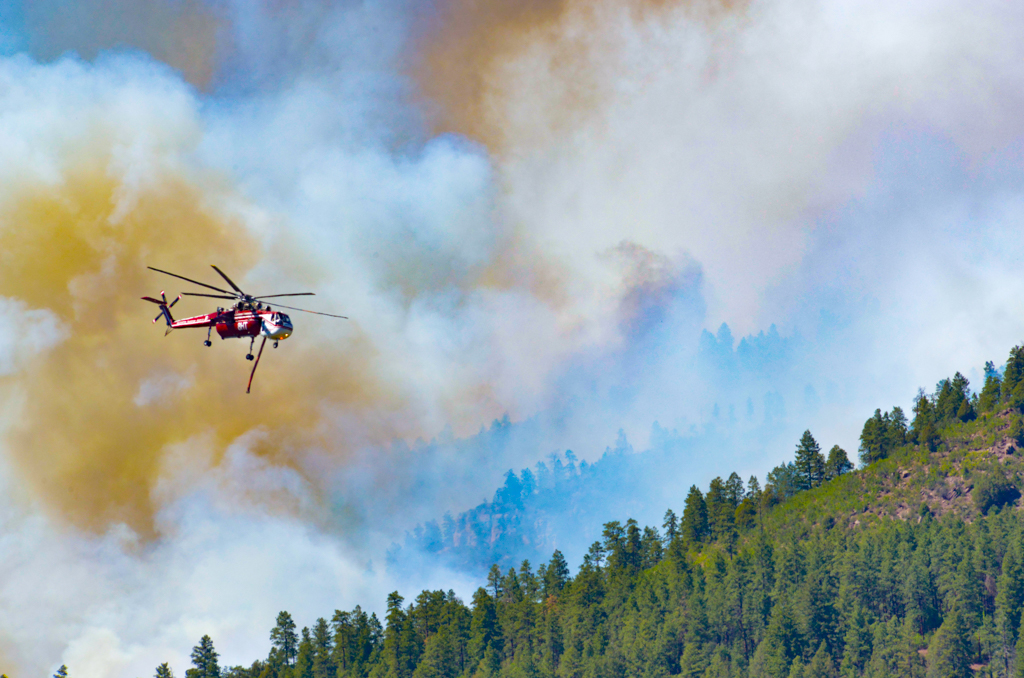
By 3 p.m. intense fire activity was creeping southeast along the slopes above Hermosa towards homes.
At a Tuesday evening community meeting fire officials told residents of the area that the fire was “backing down” the slope at a low intensity (video available at Complete Colorado’s Facebook page). This means that the fire was not reaching the pine tree canopy but was consuming ground litter and underbrush. Fire officials say this is a desirable fire behavior because it deprives the fire of potential “ladder fuels,” which are highly flammable fuels that can create flames high enough to ignite the tree canopy.
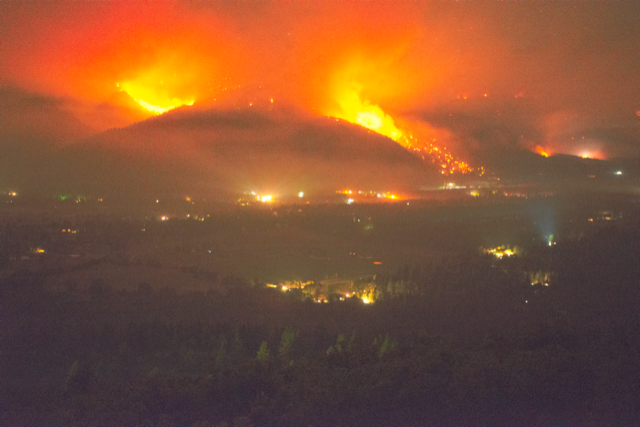
The plan was to keep the fire line above Hermosa Creek straight by setting off small backfires using “ping-pong balls” dropped by helicopter. The balls are actually a chemical device that slowly heats up and ignites on the ground. Keeping the fire line “squared up” keeps it moving slowly downhill without the opportunity for a wind shift to drive the fire sideways.
But overnight Wednesday the fire grew by about 1000 acres and now covers nearly 5000 acres. During the mid-day heat the ground fire leapt to the tree canopy and the fire began moving more rapidly.
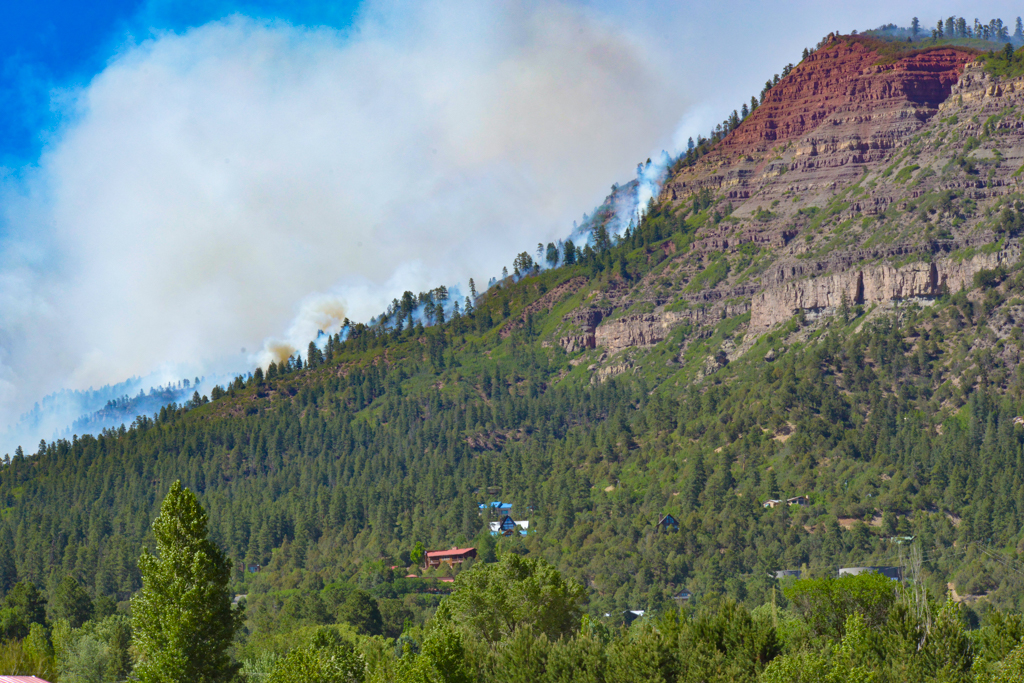
As the afternoon wore on, gusty winds from the southwest swirling in the canyon along Hermosa Creek drove the fire east along the north side of the canyon towards homes.
As of 3 p.m. the fire appears to be just more than 3/4 of a mile west of the first homes on the hillside above Hermosa.
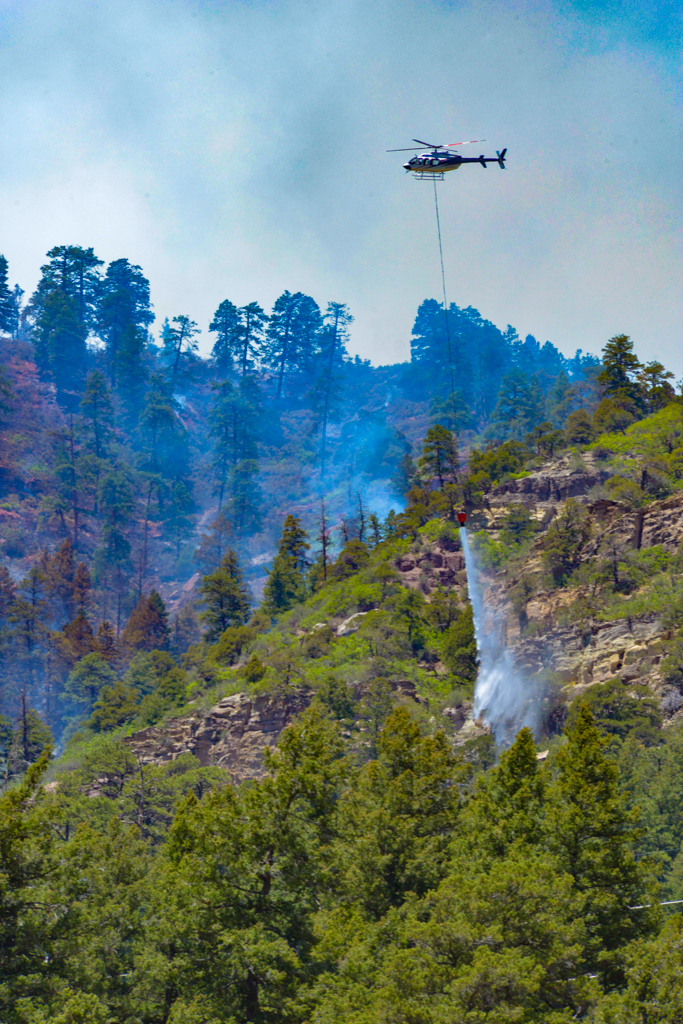
Heavy aircraft activity including air tankers and heavy helicopters are currently working hard to lay down a “wet line” between the fire and the homes. This is intended to slow the advance enough to give structure protection crews a chance to save homes.
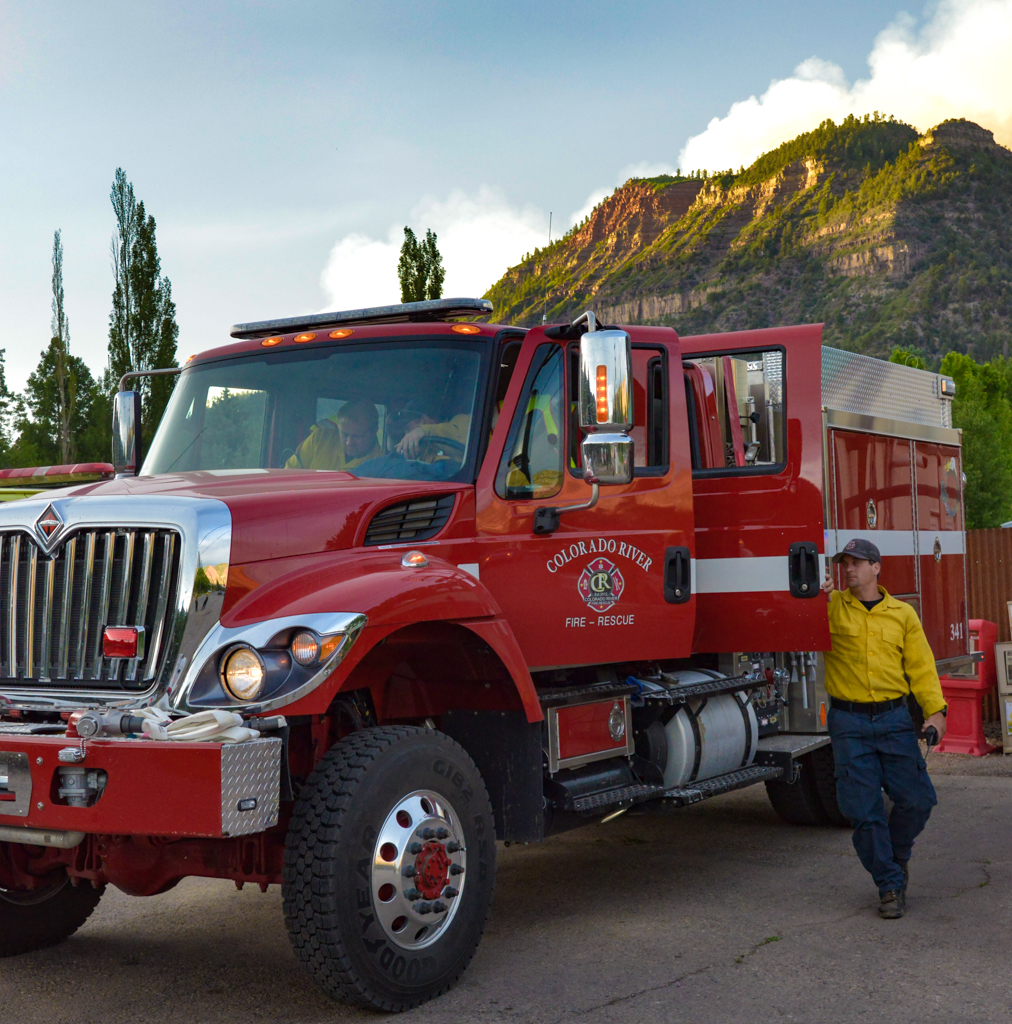
Hand crews have been preparing structure defense for several days now, which includes clearing brush near homes, setting up sprinkler lines to wet down undergrowth and laying hose lines to defend the homes.
UPDATE: 8:30 p.m.
Using a classic wildfire fighting tactic, firefighters succeeded in stopping an advancing wall of flame at times more than 200 feet high just short of homes in Hermosa.
As seen in the photograph above, at about 3 p.m. the fire had crested the ridge and was moving towards the homes tucked away on the hillside in the lower center of the photo.

As the gusty winds died down as the afternoon waned, firefighters set a backfire to the west of the homes, in the bottom of the gulch seen above and behind the red and blue houses lower left.
Working from the base of the cliff to the right and in front of a “scratch line” dug by hand by firefighters using hand tools like the Pulaski, a combination of a mattock and axe, chainsaws, shovels and other tools of the trade. This process starts with a relatively narrow line dug down through all organic surface matter to mineral soil that is about a foot or so wide.
This continuous line of un-burnable mineral soil is the final stopgap for any fire that might creep though the topsoil or vegetation.
Towards the oncoming fire workers cut brush and low tree limbs, doing what they can to deny the fire the ability to jump the scratch line. Sawyers fell large trees so that they fall away from the scratch line, creating an open area wide enough to prevent flames from jumping the line or igniting trees through heat radiation ignition.
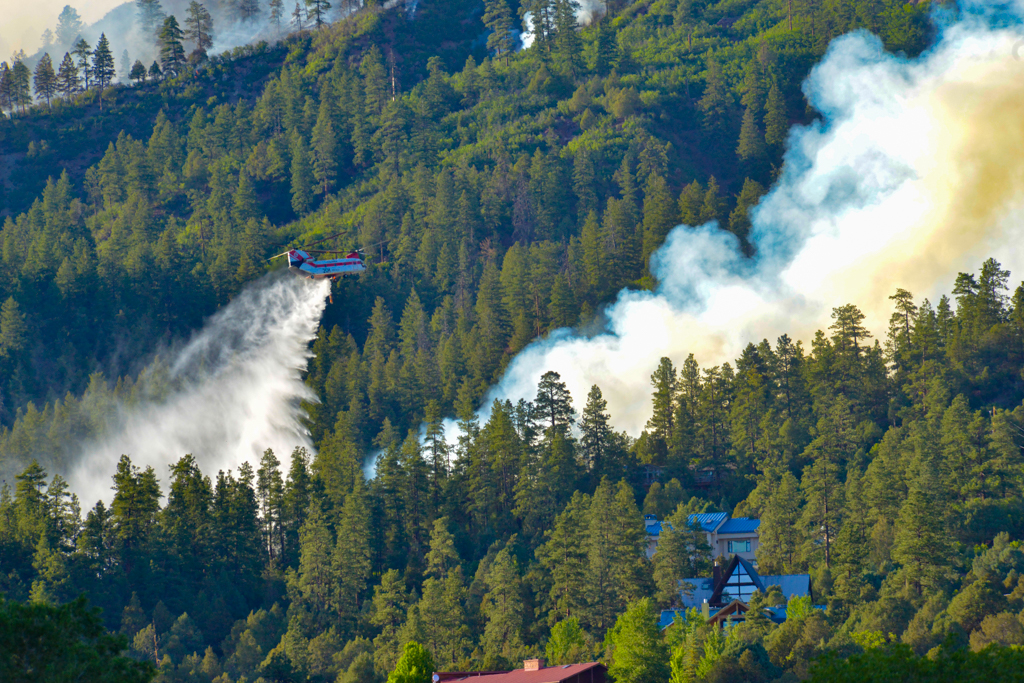
At the same time a Boeing CH-47D Chinook two-rotor helicopter dumped 2800-gallon loads of water in a “wet line” behind the scratch line to prevent embers from igniting brush behind the line.
Every four minutes the Chinook would return and lay down more wet line. This went on hour after hour until it was too dangerous to fly over the merging fires.
Meanwhile structure protection crews were finalizing their defensive plans and equipment for the houses.
As the backfire crew lit the brush inside the fire line, firefighters worked to keep the flames from crowning into the treetops. Steadily working their way downhill the teams burned out an area between the scratch line and the oncoming flame front all the way to the valley floor.
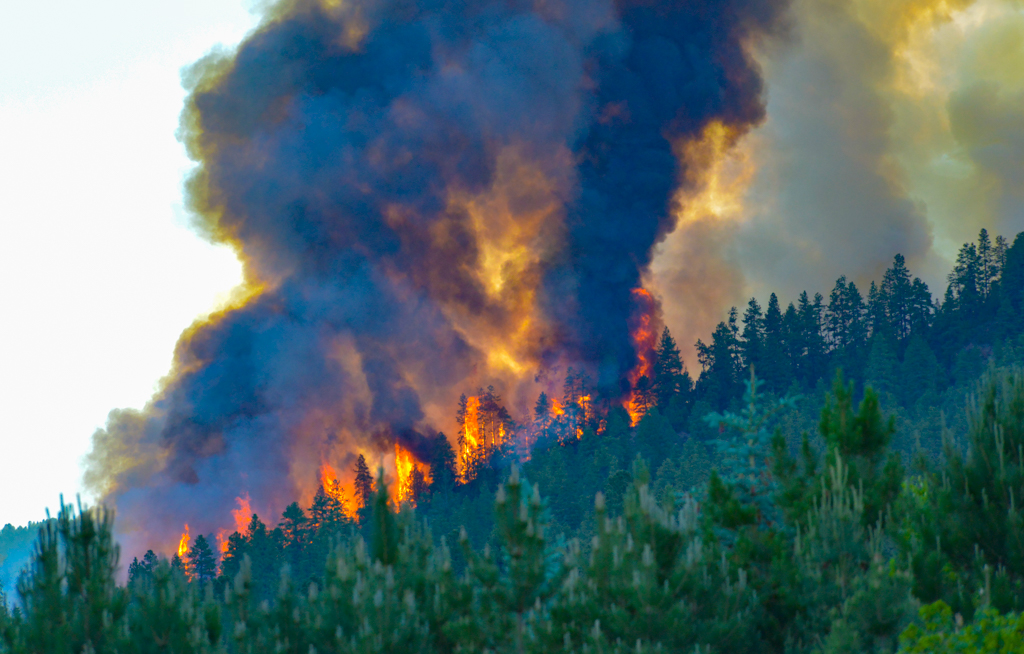
As the raging flame front got close, firefighters retreated behind the wet line to wait and watch for embers that might fall beyond the prepared fire line.
Between 7:15 p.m. and 8:35 p.m. the roaring crown fire worked its way about 3/4 of a mile to the back-burned area.
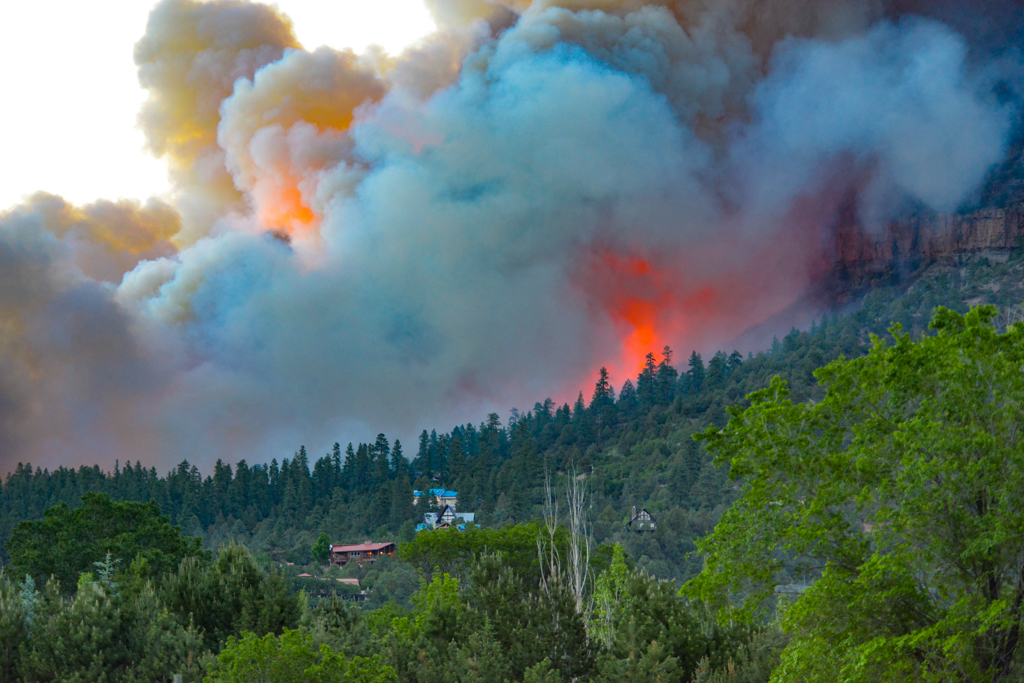
This photograph shows the backfire and flame front merging not far from the homes.
Once merged, the fire front ran uphill to the base of the cliff above.
Within minutes the fuel inside the backfire arc was burned up and the fire stopped, perhaps 500 feet from the homes.
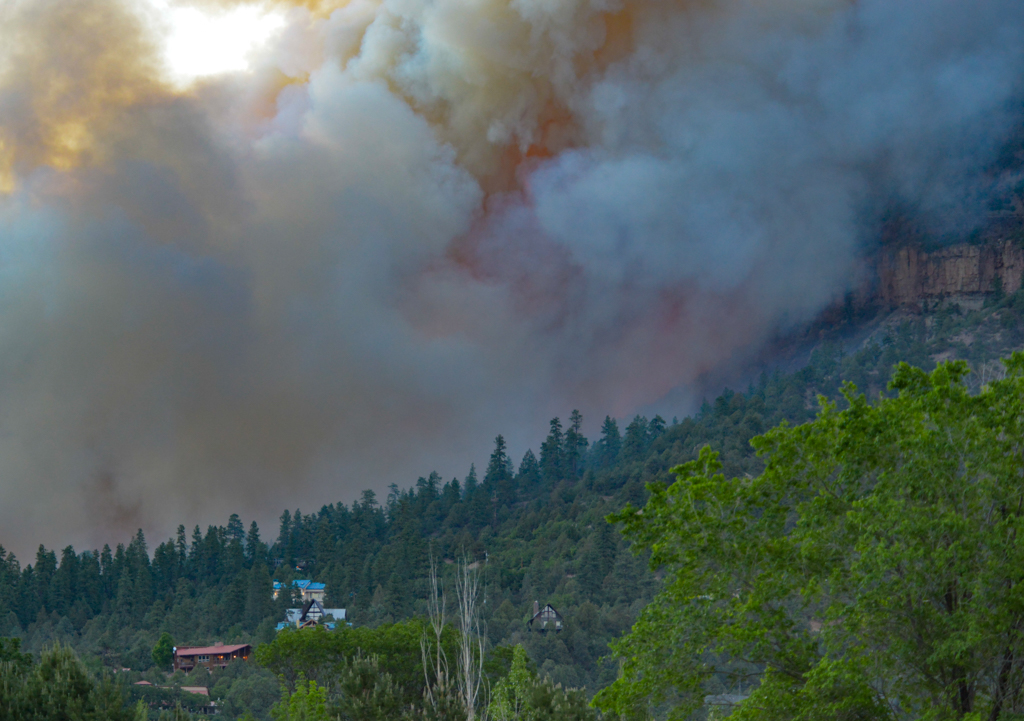
And just like that, at approximately 8:30 p.m. the fire collapsed and the immediate danger to homes in Hermosa was over.
Ground crews will work through the night to put out trees that might reignite and watch diligently to ensure that no embers are able to start spot fires outside the fire line.
The 416 fire is far from over. It may be weeks before it’s officially contained and under control. But for now the citizens of Hermosa can take a breath and thank the men and women who performed perfectly something that was both beautiful and terrifying to behold.


